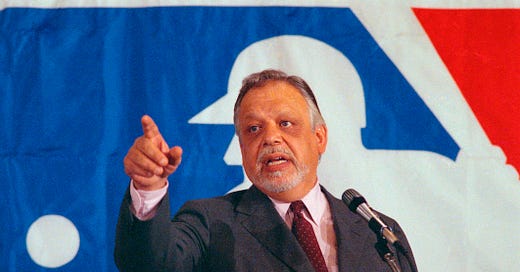THE RECENT ABRUPT RESIGNATIONS of the presidents of Stanford, the University of Pennsylvania, and Harvard highlights the precarious nature of these roles, and leads to a question: What does—and what should—a university president do?
Although the role has become more challenging as universities have grown into sprawling corporate entities, the foundations of the job description haven’t changed in the nearly four decades since I started college. The president of a university needs to: (1) raise money; (2) herd faculty; and (3) soothe students. That’s a short list, but a tall order.
In the modern context, university presidents—like other organizational leaders—have tended to be selected so as to check the stakeholder boxes, and they enter their tenures expected to govern in a low-key manner that eschews controversy and keeps the money flowing, the professors teaching, and the students coming.
In other words: The model of a modern university president is a skilled behind-the-scenes administrator who stays out of the limelight and gets things done.
This job description is remarkably similar to that of the most successful corporate CEOs, as William Thorndike argued in his insightful 2012 book, The Outsiders. Examining the qualities of top business executives, Thorndike discovered that the best CEOs (a determination based on total shareholder return over the long term) weren’t wildly charismatic leaders. Rather, they were effective, highly rational stewards of resources. On balance, they tended to be more Vulcan than visionary.
But even if this emotionally detached approach works best for large corporations—not a given—it shouldn’t be the model for today’s universities. Academia needs leaders who can engage and inspire, not duck and cover.
The model we should look to is Bart Giamatti.
A YALE GRADUATE AND RENAISSANCE SCHOLAR, Giamatti was appointed president of Yale in 1978 at the age of 39—the youngest in the university’s history. He served for seven years before pursuing his other great passion: baseball. Giamatti was first president of the National League and later the commissioner of Major League Baseball. (He passed away after just five months as commissioner, a profound loss for both the game and the country.)
I didn’t attend Yale, but I grew up in New Haven and was a faculty brat. (My parents were—and are—professors at the medical school, and Giamatti’s wife—an amazing woman in her own right—was my high school English teacher.)
When Giamatti took over at Yale, I immediately sensed Giamatti’s outsized influence on the academic community. Enthusiastic and engaged, joyful and scholarly, he infused the university with palpable energy and a sense of hope. Giamatti passionately championed a lofty vision for the role and purpose of a university, and for the sort of experience college might provide.
Giamatti believed, proudly and fervently, in the value of a “liberal education,” a perspective most persuasively expressed in a September 1983 speech to the incoming first-year class, entitled “The Earthly Use of a Liberal Education.” (It has been collected here.)
A liberal education, he explained to students, “has nothing to do with those political designer labels liberal and conservative,” nor it is “one that seeks to implant the precepts of a specific religious or political orthodoxy.” It’s also not “an education intending to prepare for immediate immersion in a profession,” which should more properly be the provenance of medical or law school.
Rather, Giamatti suggested, a liberal education is one “that can spark a lifelong love of learning.”
He continued,
A liberal education is defined by the attitude of the mind toward the knowledge the mind explores and creates. Such education occurs when you pursue knowledge because you are motivated to experience and absorb what comes of thinking . . . [It] embraces physics and well as French, lasers as well as literature, social science, and physical and biological sciences as well as the arts and humanities. A liberal education rests on the supposition that our humanity is enriched by the pursuit of learning for its own sake.
To those who ask what’s the value of such an education in “the real world,” Giamatti replied, “ideas and their pursuit define our humanity and make us human.”
He assured students, “You will not be impeded from making a living because you have learned to think for yourself and because you take pleasure in the operation of the mind in the pursuit of new ideas.”
Giamatti also defended with great passion the role of university as a place where ideas are fiercely debated, not righteously suppressed. In a brilliant 1981 address, he strongly critiqued voices—at the time, emanating from the Moral Majority and others on the right—seeking to dictate “which books are fit to read, which television programs are fit to watch, which textbooks will serve for all the young. . . . There is no debate, no discussion, no dissent. They know.”
In contrast, he said, the Yale community is “given to the competition of ideas and of merit, devoted to excellence, and dedicated to the belief that freedom of choice, speech, and creed is essential to the quest for truth that constitutes its mission.”
Perhaps most importantly, Giamatti encouraged students to “revel” in Yale’s diversity, while discovering our shared humanity—a sharp contrast to our current obsessive fixation on identity-focused differences, as Yascha Mounk’s astute The Identity Trap so effectively captures.
“Whether different idea or person, connect with it in order to understand it,” advised Giamatti. “Female and male, Christian and Jew, black, white, brown, and yellow, you must find, as we all must, what binds us together, in common hope and need, not what divides us.”
As Harvard, Pennsylvania, and other universities seek new presidents, let’s hope they consider leaders who, like Giamatti, embrace, celebrate, and, through their actions, honorably exemplify the best and most exquisitely humane qualities of a liberal education: the love of learning and exploration, the value of diversity of both experience and thought, and an irrepressible passion for discovering, expanding, and rejoicing in all that we share, and collectively pursue.






